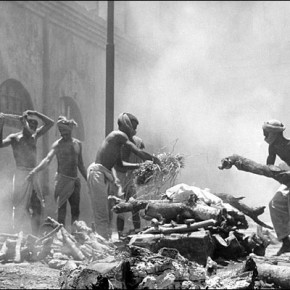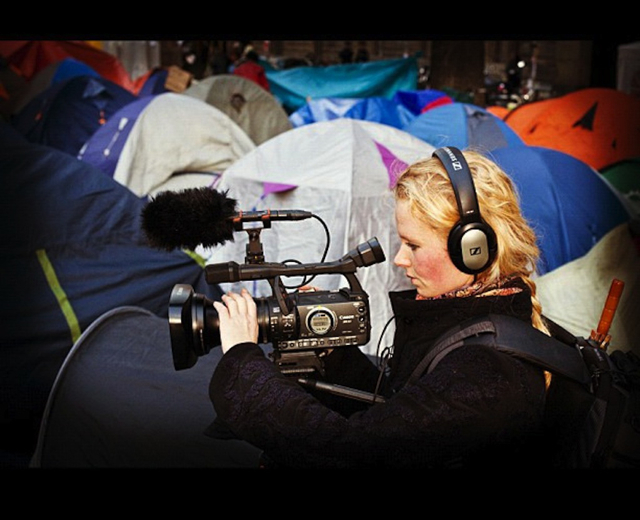Over a week on, and hundreds of think pieces later, it would seem unnecessary to explain that the Hollaback video refers not to Gwen Stefani’s Hollaback Girl, but to the video entitled 10 Hours of Walking in New York City as a Woman, produced by Rob Bliss Creative for Hollaback, an international organisation dedicated to ending street harassment against women. After all, this video, which the organisation anticipated would have no more than 10,000 viewers, ended up generating at least 32 million hits.
As is the case with many a viral video, including perhaps most notably Kony 2012, enthusiastic response can meet with enthusiastic backlash. Such occasions call into question what constitutes success (for the Kony 2012 campaign, the surfeit of attention and response crippled the plan for a slow build-up of attention in the journey from awareness to action). So, while further attention might seem to be exhausting an already exhausted topic, the Hollaback video offers an occasion for thinking about a viral video and its goals, benefits, and drawbacks.
The video aims to promote awareness of catcalling as pervasive and non-benign, something that fits within the agenda of Hollaback, a non-profit movement to end street harassment. This depiction of persistent, relentless engagement and commentary is in keeping with the website’s provision of stories from women around the world—assembled and solicited on the site. The video and the stories are provocative because for many, it is an all too familiar experience and as such, invites viewers into a community of shared feeling.
From a young age, girls and women are subjected to public evaluation that informs us of our value, a value that is assessed in terms of bodily approval and desirability. The encounters are not invariably negative, but that does not mean they are not fraught. A genial or firm rebuff of advances can result in assault, verbal or physical. One can be “beautiful” one moment, and a “fat cunt” the next, just by not responding in a manner that has been determined as favourable. Consider the death and rape threats levied against actress Shoshana Roberts simply for participating in the video, or more devastatingly, the violence than can come from a resistance to advances. Mary Spears is sadly only one of many. In such ways, street harassment fits into the larger context that establishes sets of rules for women’s behaviour and value that is confounding at best.
However, the solidarity was ultimately fractured and fragmented by the highly racialised nature of the video, which posited a white feminist subject/victim and, by editing out the white men, a Black and Latino threat. Such depictions raised old and yet still prominent spectres, whether the omission of women of colour (not to mention queer and transgendered people) from the movement or the legacy of using the safety of white women as occasion for institutionalising violence against African Americans, whether in the form of lynching, sanctioned police brutality, or the acquittal of those responsible for the murder of black men.
The torrent of critique in this case was absolutely warranted and as Hollaback noted in a letter to the public, absolutely vital. This was counter to their mission and identity as an organisation. They could learn to hone their awareness and work more closely with producers of representative videos to ensure they align with their mission and politics. If you’re going to outsource videos, take care.

Of course, not all backlash can be warranted. The polarisation that took place in the public/virtual sphere did little for the issue. Claims that catcalling was minor when compared to physical violence—particularly against men of colour—or other feminist issues like the wage gap fell into the trap of diminishing micro-aggressions and the cultural context that fosters greater violence and disparity. The declaration that the concerns over street harassment were picayune at best offered a rehash of the many dismissals of feminist concerns experienced time and again. Invocations of “white feminist bourgeoisie” have been familiar as modes of discounting the work of second wave feminists (very much collectives of their time) and suggesting that feminism has value only for a select few.
This is not to say that feminism (itself diverse and diffuse as the women who comprise 50% of the world population) is not subject to critique, but as the debate became increasingly dismissive and divisive, intersectionality was lost; women of colour, who are very much affected by this issue, were rendered absent or accused of being poor allies. But this is simply not an either/or issue. Nor is this even limited to New York and the US, as this is an international issue covered in numerous video campaigns from Belgium and France to Pakistan and India as well as all places between and beyond. This is not readily categorised as an issue of white American women fearful of other cultures and cultural practices.
This invocation of the international media ecosystem is crucial. The Hollaback video is only one of many on the issue, and only one component of their campaign. It is certainly worth contemplating the choice of style and strategy. The depiction of a woman at the centre of this unwanted attention is certainly not new, as it seeks to reframe what has been considered innocuous as menacing and devaluing. The shared nature of the experience can perhaps invite people into action.
In this case, the video did generate visibility, interest, and discussion (some more valuable than others) on the subject of street harassment, and more practically, yielded over $10,000 in donations for the organisation. However, this is not the only style of video or media activism out there. Others aim to hail men, reminding them as their role as allies—some in deeply amusing ways that take on the hypocrisy of the defences. But a video, a single video, is never going to cover the entirety of an issue, hail all audiences, or advocate for all actions. It is a useful, but nevertheless limited instrument.
Even if effective, or ineffective, this video is not the sole action of Hollaback, but a portal towards engagement with an organisation that is committed to ending street harassment. Their strategies are as diffuse as the problem as the organisations eschews a tightly centralised coordination effort for local community efforts tied to the larger goal, but taking actions more fitting for the particular locale.
Hollaback does provide information and resources for further action, whether in providing international research on the subject of street harassment or linking volunteers to forms of practical engagement: chalk walks; information sheets on rights and responsibilities; educator guides; and policy recommendations. A review of the website suggests that their recommendations, contrary to some troubling trends, are not geared to criminalisation but to prevention through education and community engagement. Their recommendations cover school curricula, training of emergency operators, and bystander training. (Criminalisation is definitely problematic to say the least, and, sadly, symptomatic of the ways in which activist projects can be hijacked by undesired partners and schemes.)
Because this is the thing that is increasingly lost in the Upworthyfication of social media “action”: A video is not the end goal, nor is its endless circulation the desired objective. It is a step in spreading awareness and generating interest, but the ultimate mission is to take people offline and into collective action.
The extreme focus on this single video has created a tunnel vision and perseveration that impedes consideration of the work of a video and its place in a much broader context. This is not to say that the video cannot be critiqued—indeed, it must be—but that it must not be treated as metonym for Hollaback, for concerns around street harassment, or for feminism.
Photographs courtesy of Laurenellen McCann and hollback1. Published under a Creative Commons license.



